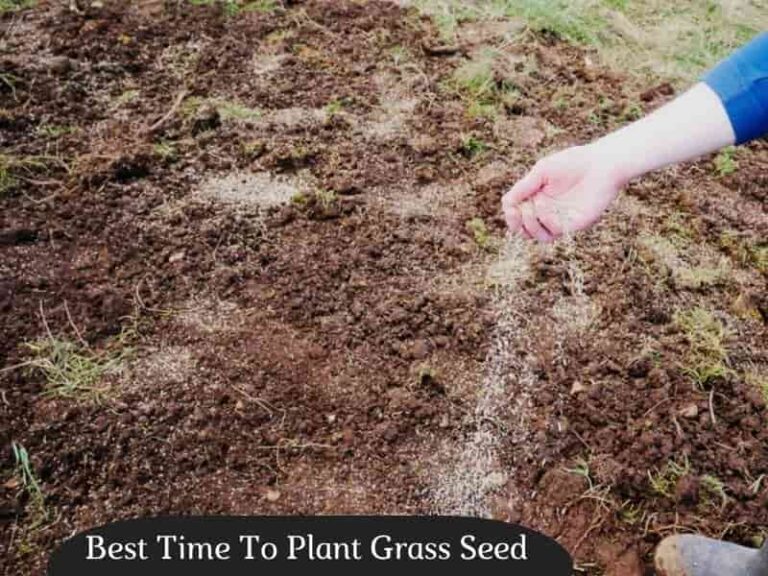Moss Lawn Pros and Cons, Cost + Maintenance
Like an ordinary and well-maintained turf-grass, moss creates a stunning visual effect on your lawn. Moss is almost maintenance-free, requiring infrequent watering and mowing, and doesn’t get infested by weeds or insects. However, it won’t survive prolonged drought or an arid-like environment.
What is a moss lawn?
Moss is an opportunistic non-flowering ground cover you can grow as an alternative to grass. It has a soft texture, is dark-green, and grows in high density, mimicking the appearance of a low-lying carpet. Unlike grass, moss reproduces by spores instead of seeds. Instead of having true roots and vascular tissues, they rely on rhizoids (root-like filaments) that absorb water and nutrients.
Moss species fall under two main groups:
- Pleurocarps: A cool-loving moss that doesn’t rot even in excess moisture.
- Acrocarps: Are drought-tolerant and can survive drier environmental conditions.
Moss can grow almost anywhere on all seven continents. While some species prefer specific climatic conditions, most of them can do well in hardiness zones 3 through to 9. Choosing the most ideal moss species for your lawn starts by identifying which ones are native to your area.
Unlike grass which requires regular fertilization for growth, Moss gets its nutrients from the atmosphere. Plants, animals, and humans around it can enjoy an air pollutant-free environment from moss. If you’re looking to establish a moss lawn, follow these steps:
Step 1: Identify an area with low-to-moderate sun exposure, preferably shaded areas like trees or bushes.
Step 2: Free the soil from any debris, fallen leaves, sticks, dead branches, and plants using a rake, to help the moss grow without interference.
Step 3: Select a moss species that can thrive in your climate. For example, the Spike Moss (Selaginella bigelovii) is native to California. It grows in rocky places in many habitat types.
Step 4: Planting. Divide the moss into ¼ inch pieces, placing each 1-2 inches apart. Use sticks or nets to hold them in place.
Step 5: Water your moss lawn for the first three-five weeks. Remove any weeds should you see them.
Advantages of a moss lawn
Requires low maintenance
Unlike grass, moss doesn’t need mowing because it doesn’t grow more than 4 inches tall. Also, it doesn’t require regular watering unless the weather is hot and dry. It only needs 2 inches of daily watering in the morning or evening during hot periods, particularly for the first five weeks.
Grass needs watering after every 3-14 days, depending on the season. Moss is more like artificial grass only that the latter, doesn’t compare to living grass or plants.
It prefers shady and humid places
Grass needs the sun for photosynthesis, which is why some species go dormant in winter. Other species of grass will have stunted growth if sunlight is absent. However, moss can grow anywhere that grass cannot survive, as long it is humid and shady. You’ve likely spotted them growing under tree canopies or shade from a house.
Moss can also survive in waterlogged soil, unlike grass which will develop rot due to fungal infestation and other diseases. If you live in a region with low light and high humidity, a moss lawn is the best alternative you have to grass.
Can thrive without fertilization
Grass, depending on species type, requires quarterly, half-year, or annual fertilization to be thick and lush. Moreover, it needs regular maintenance practices like aeration and scarifying. That means you’ll need to hire a professional; a move that can substantially increase your budget. Moss lawn, on the other hand, doesn’t need fertilization.
Aesthetical appeal
A moss lawn looks dark-green and it grows thick; a trait that makes it uniquely appealing. Unlike grass, it doesn’t go dormant, neither does it lose its lushness. Furthermore, its soft texture makes it pleasant to touch. You can walk on it barefoot unlike some grass species that may have sharp blades.
It’s insect-free
Due to the low density of some grass species, it is very easy for insects to hide inside and lay eggs. This makes grass prone to insects like mosquitoes and beetles; a menace that can prevent you from enjoying the outdoor benefits of lawns. With moss, you won’t have to worry about insects buzzing in the air because it grows in high density.
It’s weed-free
Thanks to its dense-growing properties, a moss lawn is highly unlikely to allow weeds to grow alongside it. Moreover, weeds can barely survive in areas with shade and high humidity; a growing condition that moss prefers. With grass, it’s very easy for weeds to germinate alongside it and you will have to pluck them out if you want them to grow healthy.
| Pros | Cons |
| Moss prefers shade and humidity | May require frequent watering the first few weeks |
| Doesn’t need mowing | Increases soil acidity |
| No fertilizer required | Cannot tolerate prolonged sun |
| Visually appealing | Can easily get damaged through heavy foot traffic |
| Many specie varieties | |
| Doesn’t get infested by insects | |
| Is resistant to weeds | |
Disadvantages of a moss lawn
Moss also has its fair share of disadvantages as listed below:
1. It prefers soils with low pH
Moss grows in acidic soils (pH should be below 6.0) to maintain its dark-green color. While it can also grow in neutral soils, its color is likely to change to yellow-green and grow slowly. If you’re planning to introduce other plants to your lawn, chances are some won’t withstand the soil acidity. This trait makes it difficult for lawn owners looking to mix different species of plants in their moss lawns.
Moss also needs compact soil and will hardly survive in aerated soil like sand. The latter prevents it from holding firm to the soil surface. How moss grows in the poorest types of soils is still a mystery.
2. It won’t withstand too much sun
Moss is shade-loving and won’t tolerate too much sun. Unless you plant it under a shade, you will have to give it frequent water. While some species can survive partial sunlight, still, they’ll need too much watering and will lose their dark-green color.
3. Can’t withstand heavy traffic
Moss might mimic the appearance of a dark-green carpeted floor, giving you the temptation to walk over it. It will tolerate light traffic. But if you have many people streaming in and out of your yard, it’s best to install stepping stones. Alternatively, get grass if your lawn is near the house for recreation.
4. It won’t thrive in soil surface with plant debris
Plant debris like fallen leaves, twigs, and flowers can compromise Moss’ growing ability when left to surface on its surface. You will be required to clean its surface from time to time if you want it to grow dense and lush. Grass, on the other hand, can make use of the plant debris as manure though too much of it may also prevent it from absorbing nutrients, water and sunlight.
How is a moss lawn maintained?
The good news is a moss lawn doesn’t require too much attention, unlike grass. However, some minor care tips will keep it lush and maintain its dark-greenness as shown below:
No need of mowing but pruning is allowed
Moss doesn’t need mowing as it grows not more than five inches in height. Routine maintenance care like removing plant debris or any other unwanted materials like pet feces or food particles will help it grow healthy and lush.
Like grass, some parts of your moss may look level, while others are rugged and unappealing. Pruning the excessively long strands helps to encourage even regrowth of moss. You can use a pair of gardening scissors to keep trimming them.
Frequently water it only in hot and dry weather
During hot and dry weather, give moss 2 inches of water daily in the morning or evening, particularly for the first five weeks of planting. For acrocarp, you will need to water it daily for the first two months. However, be careful not to go overboard with watering an acrocarp as it can drown it. Pleurocarps, on the other hand, can tolerate heavy watering as long as the 2-inch topsoil feels dry.
As it draws in the water, pay attention to the edges as they dry out quickly. Moss doesn’t need water in winter.
Install pavements, stepping stones, or stairs if you have children and pets
Moss can handle light traffic, particularly if you’re stepping on it to remove weeds or plant debris. Jumping, running, sliding on it will damage it. If you have kids or pets, install stairs, stepping stones, or pavement to prevent them from disturbing it with sudden movements.
Watch out for molds
Moss growing on waterlogged soil can also attract mold growth. Don’t get frustrated if you see the white spots (indication of mold growth) appearing on the surface of the moss plant. Use a pair of scissors to remove the mold. But if the molds have taken over a more significant portion of your moss lawn, you might need to replace it with new moss.
Do moss lawns grow well in Florida?
Florida majorly experiences a sub-tropical climate with mild winters, making it a suitable area to grow moss lawn. In summer, temperatures can go as high as 91 degrees Fahrenheit. The best time to plant a moss lawn in Florida is in fall (around September) when the temperatures are low.
Moss vs grass: Which one should you pick?
A moss lawn is a perfect alternative to grass for budget-conscious homeowners with busy lifestyles and a fine taste for stunning lawns. It grows effortlessly and doesn’t need intense gardening care practices like mowing, frequent watering, seeding, fertilization, insecticide, or herbicide application. It’s also the best choice for eco-friendly enthusiasts since it purifies the air around them.
However, moss lawns cannot tolerate abuse like heavy traffic. It’s appealing to look at but will rob you of outdoor recreational activities like hosting a barbecue. Unless you install pavements, stairs, or stepping stones, your moss lawn will get damaged at the slightest digging from pets or children. The decision to choose moss over grass depends on your resilience to handle good lawn care practices and your intention of what a lawn should look like.
Sources and References
- IFAS Extension UNIVERSITY of FLORIDA: Spanish Moss
- Frederick B. Essig University of South Florida Herbarium Institute for Systematic Botany: Guide to the mosses of Central Florida with an interactive key
- Washington State University- Benton County Extension: Moss in Lawns and Gardens



